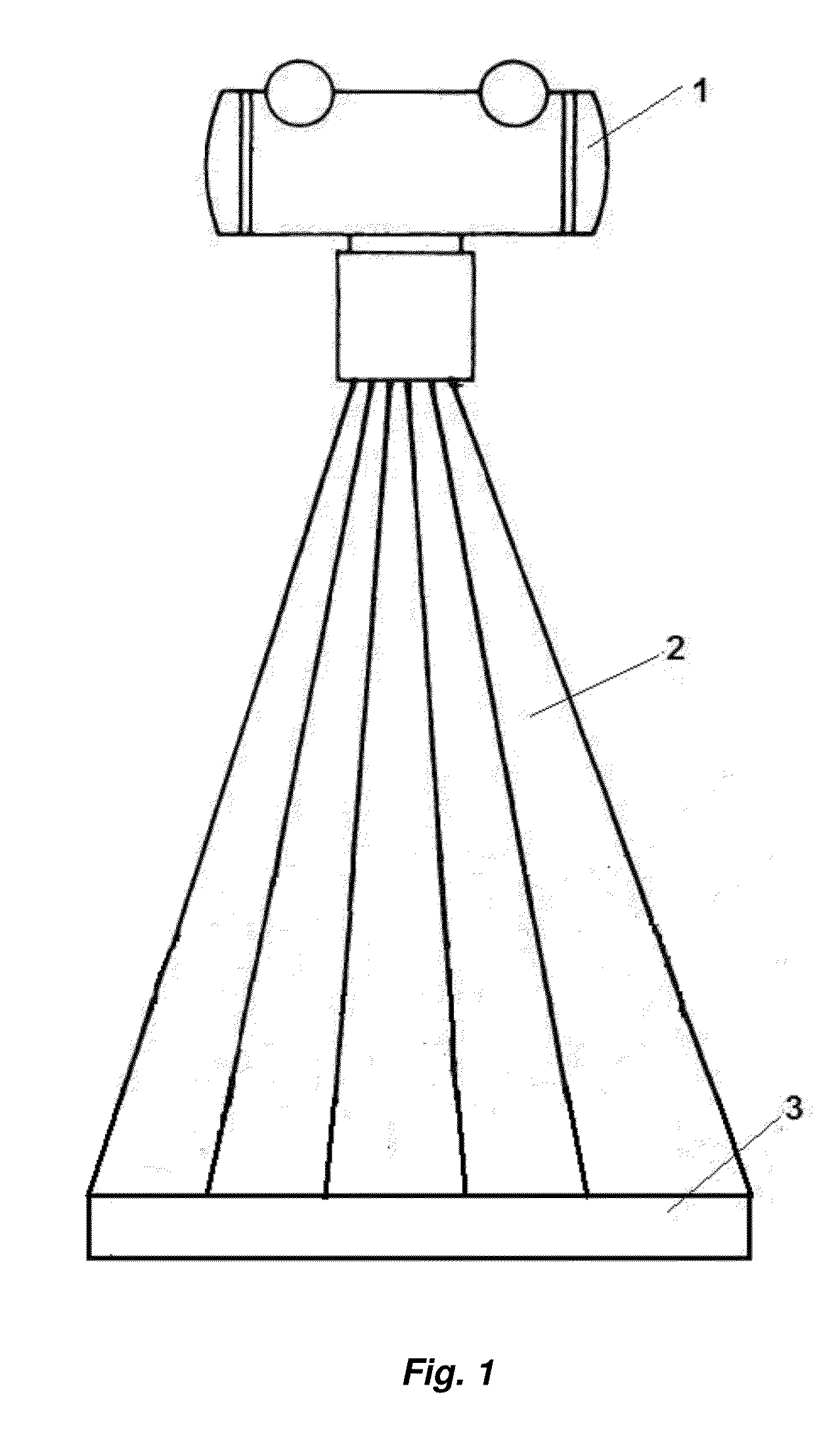Method of Noise Reduction in Digital X-Ray Frames Series
a digital x-ray and frame series technology, applied in image data processing, instruments, character and pattern recognition, etc., can solve the problems of image noise, flicker, and the need to take in digital x-ray frames series, and achieve the effect of increasing the quality of digital frames series
- Summary
- Abstract
- Description
- Claims
- Application Information
AI Technical Summary
Benefits of technology
Problems solved by technology
Method used
Image
Examples
Embodiment Construction
[0048]X-ray frame acquisition is implemented for instance by the device represented in FIG. 1. It comprises an x-ray tube 1 that emits an x-ray beam 2. The x-ray beam 2 enters a detector 3. The detector 3 consists of a scintillation screen (not shown) and photosensitive array (not shown). The scintillation screen is optically coupled with the active surface of the photosensitive array. The x-ray beam 2 entered a detector 3, is converted by the scintillation screen into visible light that is converted into digital form by the sensors of the detector.
[0049]Suggested in the claimed invention filter reduces noise within several stages. Let us consider each of the said stages in details.
[0050]Stage 1. Frame-by-Frame Estimation of Signal Intensity-Dependent Noise Variance.
[0051]At this stage frame estimation is implemented by means of LF linear filtration of the current frame [Hensel et. al., Robust and Fast Estimation of Signal-Dependent Noise in Medical X-Ray Image Sequences, Springer, ...
PUM
 Login to View More
Login to View More Abstract
Description
Claims
Application Information
 Login to View More
Login to View More - R&D
- Intellectual Property
- Life Sciences
- Materials
- Tech Scout
- Unparalleled Data Quality
- Higher Quality Content
- 60% Fewer Hallucinations
Browse by: Latest US Patents, China's latest patents, Technical Efficacy Thesaurus, Application Domain, Technology Topic, Popular Technical Reports.
© 2025 PatSnap. All rights reserved.Legal|Privacy policy|Modern Slavery Act Transparency Statement|Sitemap|About US| Contact US: help@patsnap.com



